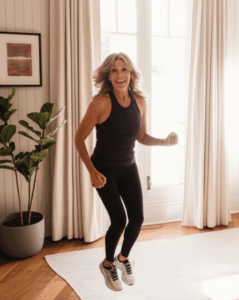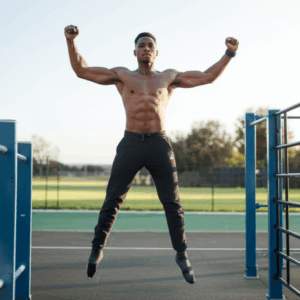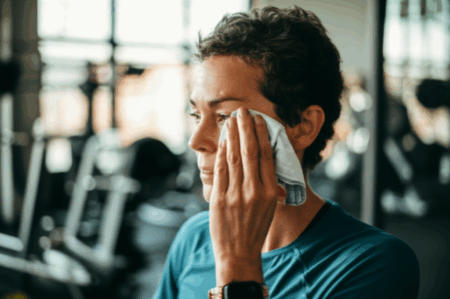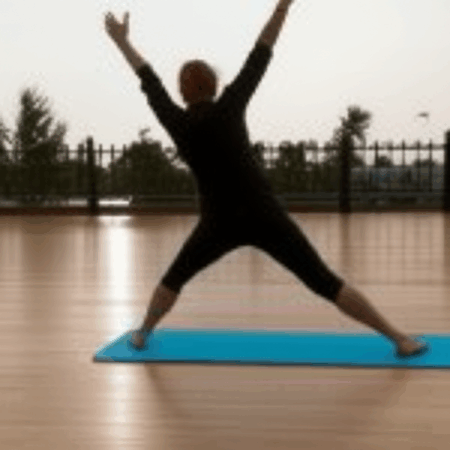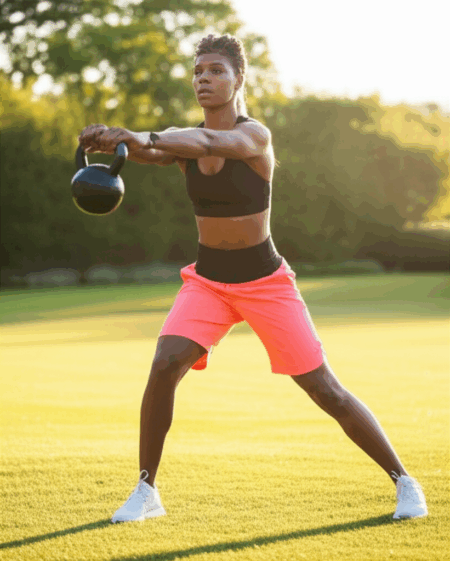Staying in incredible shape at 78 isn’t about chasing youth—it’s about embracing a lifestyle that celebrates vitality and well-being. It’s about making conscious choices every day that nourish your body, challenge your mind, and keep you feeling strong and energized. This isn’t a miracle cure or a quick fix, but a sustainable routine built on consistency, mindful movement, and a positive mindset. Here’s my exact routine that keeps me feeling fantastic:
The Foundation: Consistent Movement
The cornerstone of my fitness at 78 is consistent physical activity. I aim to incorporate some form of movement into my daily life. The NHS recommends that older adults should aim to be physically active every day, even if it’s just light activity. Here’s how I break it down:
1. Daily Walks
Walking is a fantastic low-impact exercise that strengthens muscles, improves cardiovascular health, and boosts overall well-being. I try to walk for at least 30 minutes each day. Sometimes, I’ll walk around my neighborhood, explore local parks, or even just do laps around my house when the weather isn’t cooperating. Walking helps prevent diseases, lower risk of falls, and improves mental health.
Tips for Walking:
- Start Slow: If you’re new to walking, begin with shorter distances and gradually increase the time and intensity.
- Proper Gear: Wear comfortable shoes with good support and dress in layers to adjust to changing temperatures.
- Stay Hydrated: Carry a water bottle to stay hydrated, especially on warmer days.
2. Strength Training (2-3 Times Per Week)
Strength training is essential for maintaining muscle mass and bone density as we age. It helps prevent bone loss, relieves osteoarthritis pain, and helps prevent chronic disease. I focus on exercises that use my own body weight or light dumbbells.
My Go-To Strength Exercises:
- Chair Squats: Sit on a chair and stand up, using your leg muscles. Repeat 10-15 times.
- Wall Push-Ups: Stand facing a wall, place your hands on the wall, and do push-ups. Aim for 10-15 reps.
- Bicep Curls: Using light dumbbells (2-5 pounds), curl the weights up towards your shoulders. Do 10-12 reps.
- Calf Raises: Stand near a chair for support, and raise up on your toes. Repeat 15-20 times.
- Towel Exercises: Grip a towel at each end, start at your knees and raise the towel above your head, keeping tension on the towel and then lower it back down and repeat 10 times.
Key Considerations for Strength Training:
- Proper Form: Focus on maintaining correct form to avoid injuries. If you’re unsure, consult with a fitness professional.
- Listen to Your Body: Don’t push yourself too hard, especially when starting. Rest when you need to, and gradually increase the intensity.
- Consistency: Regular strength training is more effective than occasional intense sessions.
3. Balance and Flexibility (Daily)
Balance and flexibility exercises are crucial for preventing falls and maintaining mobility. Yoga, Tai Chi, and simple stretches can make a big difference. According to Johns Hopkins Medicine, exercise helps to lower blood pressure, lower the risks of falls and serious injuries and slow the body’s loss of muscle and bone mass.
My Daily Balance and Flexibility Routine:
- Single Limb Stance: Stand behind a steady chair and hold on to the back of it. Lift up your right foot and balance on your left foot. Hold that position for as long as you can, then switch feet.
- Ankle Circles: Sit in a chair with your feet flat on the floor. Lift one foot slightly and rotate your ankle in a circular motion, clockwise and counterclockwise. Repeat with the other foot.
- Shoulder Rolls: Roll your shoulders backward and forward in a slow, controlled motion.
- Neck Stretches: Gently tilt your head to the left, right, forward, and backward. Hold each stretch for 15-30 seconds.
- Seated Stretches: While sitting, reach for your toes, twist your torso gently, and stretch your arms overhead.
Tips for Balance and Flexibility:
- Use Support: Hold onto a chair or wall for support when needed.
- Gentle Movements: Avoid jerky or fast movements that can cause injury.
- Breathe Deeply: Focus on your breath while stretching to enhance relaxation and flexibility.
4. Low-Impact Cardio
Beyond walking, I enjoy other forms of low-impact cardio. Here are some examples:
- Swimming: It’s easy on the joints and provides a full-body workout.
- Cycling: A great way to improve cardiovascular health and leg strength.
- Dancing: A fun and social activity that boosts your heart rate and coordination.
Making Cardio Enjoyable:
- Find Activities You Love: The key to sticking with cardio is to find activities that you genuinely enjoy.
- Mix It Up: Vary your cardio routine to keep things interesting and prevent boredom.
- Socialize: Exercise with friends or join a class to make it a social activity.
Nutrition: Fueling My Body Right
Exercise is only part of the equation. Nutrition plays a vital role in maintaining my health and energy levels. I focus on a balanced diet rich in nutrients and low in processed foods. Good nutrition is important, no matter what your age. It gives you energy and can help you control your weight.
1. Balanced Diet
I aim to eat a variety of foods from all food groups to ensure I get the necessary vitamins and minerals. MedlinePlus recommends eating foods that give you lots of nutrients without a lot of extra calories, such as fruits, vegetables, and whole grains.
Key Components of My Diet:
- Fruits and Vegetables: I try to eat a rainbow of colors to get a wide range of vitamins and antioxidants.
- Lean Protein: Essential for muscle repair and maintenance. I include sources like fish, chicken, beans, and tofu.
- Whole Grains: Provide fiber and sustained energy. I opt for oatmeal, brown rice, and whole-wheat bread.
- Healthy Fats: Important for brain health and overall well-being. I include sources like avocados, nuts, seeds, and olive oil.
- Dairy: Opt for fat-free or low-fat milk and cheese, or soy or rice milk that has added vitamin D and calcium
2. Hydration
Staying hydrated is crucial, especially as we age. I drink plenty of water throughout the day, even if I don’t feel thirsty.
Hydration Tips:
- Carry a Water Bottle: Keep a water bottle with you and sip on it throughout the day.
- Eat Hydrating Foods: Include fruits and vegetables with high water content, such as watermelon and cucumbers.
- Limit Sugary Drinks: Avoid sodas and sugary juices that can lead to dehydration and other health problems.
3. Supplements
While I focus on getting most of my nutrients from food, I also take certain supplements to fill any gaps.
My Supplement Regimen:
- Vitamin D: Important for bone health and immune function.
- Calcium: Essential for maintaining strong bones.
- Vitamin B12: Helps with nerve function and red blood cell production.
- Omega-3 Fatty Acids: Beneficial for heart health and brain function.
Important Note: Consult with your healthcare provider before starting any new supplements to ensure they are right for you.
Mental and Social Well-being: Staying Engaged
Physical health is closely linked to mental and social well-being. Staying mentally active and socially connected is just as important as physical exercise.
1. Mental Stimulation
I keep my mind sharp by engaging in activities that challenge me.
My Mental Stimulation Activities:
- Reading: I read books, newspapers, and magazines to stay informed and entertained.
- Puzzles: Crosswords, Sudoku, and jigsaw puzzles help keep my mind active.
- Learning New Skills: I enjoy taking online courses and learning new things, like a new language or a musical instrument.
2. Social Connection
Maintaining social connections is essential for emotional and mental health. The benefits of personal training for seniors are manifold, regular exercise can make a significant difference in quality of life.
My Social Activities:
- Spending Time with Loved Ones: I make time to see my family and friends regularly.
- Volunteering: Helping others gives me a sense of purpose and connection.
- Joining Clubs and Groups: I participate in activities with like-minded people, such as book clubs or exercise groups.
3. Stress Management
Managing stress is crucial for overall health and well-being.
My Stress Management Techniques:
- Meditation: I practice daily meditation to calm my mind and reduce stress.
- Deep Breathing: Simple deep breathing exercises can help lower stress levels.
- Hobbies: Engaging in hobbies that I enjoy, such as gardening or painting, helps me relax.
Adapting and Listening to Your Body
The key to maintaining fitness at any age is to adapt your routine to your body’s needs and listen to what it’s telling you.
1. Recognizing Limitations
It’s important to recognize your limitations and adjust your activities accordingly.
Tips for Adapting:
- Modify Exercises: If an exercise is too difficult or painful, modify it or find an alternative.
- Rest When Needed: Don’t push yourself too hard. Rest and recovery are essential for preventing injuries and maintaining progress.
- Seek Professional Advice: Consult with your doctor or a physical therapist for guidance on adapting your routine.
2. Staying Positive
A positive mindset can make a big difference in your ability to stick with your fitness routine.
Tips for Staying Positive:
- Focus on Progress: Celebrate your accomplishments, no matter how small.
- Set Realistic Goals: Set goals that are achievable and sustainable.
- Practice Gratitude: Focus on the things you’re grateful for in your life.
3. Embracing the Journey
Staying in incredible shape at 78 is a journey, not a destination. It requires commitment, consistency, and a willingness to adapt and learn. By prioritizing movement, nutrition, mental and social well-being, and listening to your body, you can achieve peak fitness at any age and enjoy a vibrant, fulfilling life. Remember, it’s never too late to start!

